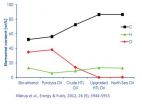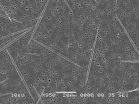(Press-News.org) A tiny capsule invented at a UCLA lab could go a long way toward improving cancer treatment.
Devising a method for more precise and less invasive treatment of cancer tumors, a team led by researchers from the UCLA Henry Samueli School of Engineering and Applied Science has developed a degradable nanoscale shell to carry proteins to cancer cells and stunt the growth of tumors without damaging healthy cells.
In a new study, published online Feb. 1 in the peer-reviewed journal Nano Today, a group led by Yi Tang, a professor of chemical and biomolecular engineering and a member of the California NanoSystems Institute at UCLA, reports developing tiny shells composed of a water-soluble polymer that safely deliver a protein complex to the nucleus of cancer cells to induce their death. The shells, which at about 100 nanometers are roughly half the size of the smallest bacterium, degrade harmlessly in non-cancerous cells.
The process does not present the risk of genetic mutation posed by gene therapies for cancer, or the risk to healthy cells caused by chemotherapy, which does not effectively discriminate between healthy and cancerous cells, Tang said.
"This approach is potentially a new way to treat cancer," said Tang. "It is a difficult problem to deliver the protein if we don't use this vehicle. This is a unique way to treat cancer cells and leave healthy cells untouched."
The cell-destroying material, apoptin, is a protein complex derived from an anemia virus in birds. This protein cargo accumulates in the nucleus of cancer cells and signals to the cell to undergo programmed self-destruction.
The polymer shells are developed under mild physiological conditions so as not to alter the chemical structure of the proteins or cause them to clump, preserving their effectiveness on the cancer cells.
Tests done on human breast cancer cell lines in laboratory mice showed significant reduction in tumor growth.
"Delivering a large protein complex such as apoptin to the innermost compartment of tumor cells was a challenge, but the reversible polymer encapsulation strategy was very effective in protecting and escorting the cargo in its functional form," said Muxun Zhao, lead author of the research and a graduate student in chemical and biomolecular engineering at UCLA.
Tang's group continues to research ways of more precisely targeting tumors, prolonging the circulation time of the capsules and delivering other highly sought-after proteins to cancer cells.
The research team also included former UCLA Engineering student Zhen Gu, now an assistant professor in the joint biomedical engineering department at the University of North Carolina at Chapel Hill and North Carolina State University, and University of Southern California researchers including graduate student Biliang Hu, postdoctoral scholar Kye-Il Joo and associate professor Pin Wang.
The Nano Today paper also will be published in a future print edition of the journal.
INFORMATION:
The research was funded by the David and Lucille Packard Foundation and a breast cancer research grant from the Congressionally Directed Medical Research Program.
The UCLA Henry Samueli School of Engineering and Applied Science, established in 1945, offers 28 academic and professional degree programs and has an enrollment of more than 5,000 students. The school's distinguished faculty are leading research to address many of the critical challenges of the 21st century, including renewable energy, clean water, health care, wireless sensing and networking, and cybersecurity. Ranked among the top 10 engineering schools at public universities nationwide, the school is home to nine multimillion-dollar interdisciplinary research centers in wireless sensor systems, wireless health, nanoelectronics, nanomedicine, renewable energy, customized computing, the smart grid, and the Internet, all funded by federal and private agencies and individual donors.
(www.engineer.ucla.edu | www.twitter.com/uclaengineering)
For more UCLA news, visit the UCLA Newsroom and follow us on Twitter.
END
A closer look at personalized or point-of-care healthcare was the focus of a recent international conference in India organized and chaired by NJIT Distinguished Professor Atam Dhawan. The IEEE Engineering in Medicine and Biology Society (EMBS) International Special Topic Conference in point-of-care healthcare technologies, broadcast around the world, focused on topics ranging from 21st century medicine with new smart cross-and trans-disciplinary technologies to how wireless communications will change how physicians care for patients.
"The last century witnessed a ...
As fibers go, there's never been anything quite like spider silk. Stretch it. Bend it. Soak it. Dry it out. Spider silk holds up. It is five times stronger than steel and can expand nearly a third greater than its original length and snap right back like new. Ounce-for-ounce spider silk is even stronger than Kevlar, the man-made fiber used in bulletproof vests.
It would be understandable to think that science knows all there is to know about the remarkable physics of spider silk, but the truth is far from that. Now, using a long-known-but-underutilized spectroscopy technique, ...
To emphasize, the HTL process accepts all biomasses from modern society – sewage sludge, manure, wood, compost and plant material along with waste from households, meat factories, dairy production and similar industries.
It is by far the most feedstock flexible of any liquid fuel producing process, including pyrolysis, bio-ethanol, gasification with Fischer-Tropsch or catalytic upgrading of different vegetable or agro-industrial residual oils, and does not carry higher costs than these.
Hydrothermal liquefaction is basically pressure cooking, but instead of cooking the ...
CAMBRIDGE, Mass. -- The peaks of the Himalayas are a modern remnant of massive tectonic forces that fused India with Asia tens of millions of years ago. Previous estimates have suggested this collision occurred about 50 million years ago, as India, moving northward at a rapid pace, crushed up against Eurasia. The crumple zone between the two plates gave rise to the Himalayas, which today bear geologic traces of both India and Asia. Geologists have sought to characterize the rocks of the Himalayas in order to retrace one of the planet's most dramatic tectonic collisions.
Now ...
UNIVERSITY PARK, Pa. -- Preserving genetically diverse local crops in areas where small-scale farms are rapidly modernizing is possible, according to a Penn State geographer, who is part of an international research project investigating the biodiversity of maize, or corn, in hotspots of Bolivia, Peru and Mexico.
Hotspots are areas where cultivation of peaches and other non-traditional crops has exploded over the past decade, noted Karl Zimmerer, professor and head of the Department of Geography, and where small-scale farms are often female-run and have been previously ...
HERSHEY, Pa. --A compound that stimulates the production of a tumor-fighting protein may improve the usefulness of the protein in cancer therapy, according to a team of researchers.
TRAIL is a natural anti-tumor protein that suppresses tumor development during immune surveillance -- the immune system's process of patrolling the body for cancer cells. This process is lost during cancer progression, which leads to uncontrolled growth and spread of tumors.
The ability of TRAIL to initiate cell death selectively in cancer cells has led to ongoing clinical trials with artificially ...
Bad news about the economy could cause you to pack on the pounds. This according to a new study from the University of Miami School of Business Administration published in the February edition of Psychological Science, a journal of the Association of Psychological Science. The study shows that when there is a perception of tough times, people tend to seek higher-calorie foods that will keep them satisfied longer. When subconsciously primed with such messages, a "live for today" impulse is triggered causing people to consume nearly 40 percent more food than when compared ...
With help from a wind tunnel and the latest DNA technology, U.S. Department of Agriculture (USDA) scientists are shedding light on the travel patterns of microbes in soils carried off by strong winds. The work has implications for soil health and could lead to management practices that minimize the damage to soils caused by wind erosion.
Wind erosion is an emerging issue in soil conservation efforts. Agricultural Research Service (ARS) scientists have been studying wind-eroded soils since the 1930s, but few studies have focused on the effects of wind on the bacteria, ...
INDIANAPOLIS -- Medical literature long has touted the benefits of omega-3 fatty acids for the heart. But until now, researchers have not studied the potential benefit for people on hemodialysis, who are among the highest-risk patients for sudden cardiac death.
A study published Feb. 6 online in the journal Kidney International, which included 100 patients who died of sudden cardiac death during their first year of hemodialysis and 300 patients who survived, is the first to examine this question.
Allon N. Friedman, M.D., associate professor of medicine in the Division ...
SAN FRANCISCO, Feb. 6, 2013 -- Nitrogen in ocean waters fuels the growth of two tiny but toxic phytoplankton species that are harmful to marine life and human health, warns a new study published in the Journal of Phycology.
Researchers from San Francisco State University found that nitrogen entering the ocean -- whether through natural processes or pollution -- boosts the growth and toxicity of a group of phytoplankton that can cause the human illness Amnesic Shellfish Poisoning.
Commonly found in marine waters off the North American West Coast, these diatoms (phytoplankton ...


